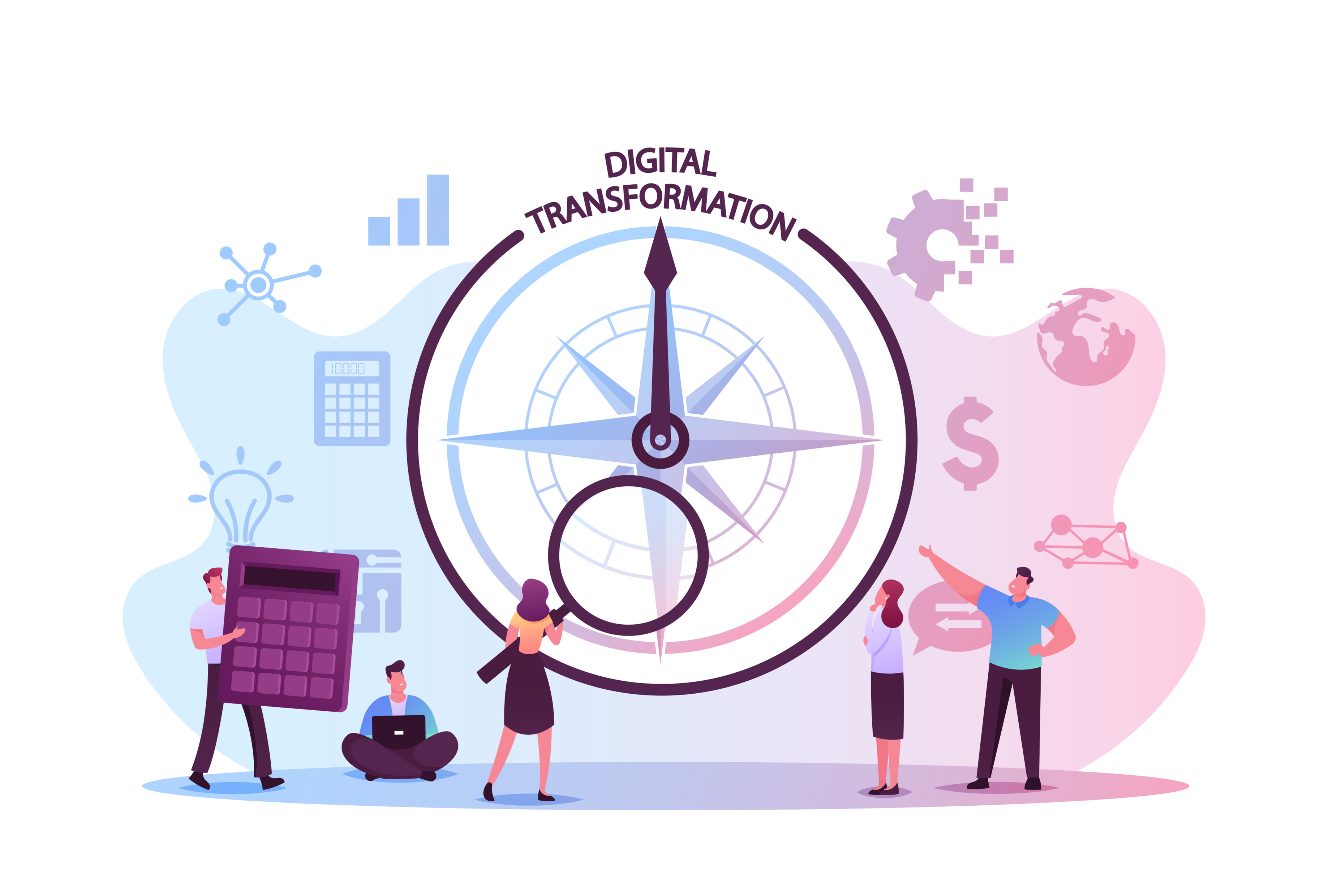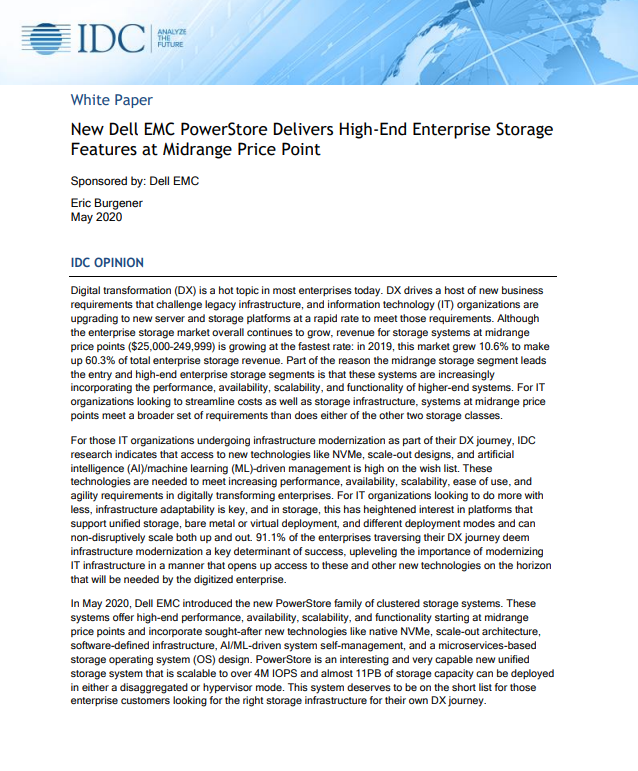Even cutting-edge firms need digital transformation
Why young and exciting businesses must innovate or die


There’s no questioning how critical digital transformation is to business longevity. From traditional banks to legacy tech giants like IBM, evolving customer demands have forced the most successful businesses to change how they operate. The COVID-19 pandemic has also shown how massive events – particularly those that are largely unforeseen – can reshape the business landscape in the blink of an eye, compelling organisations to not only adopt new systems but new ways of thinking.
When we consider digital transformation, what often comes to mind is an archaic entity lumbered with out-of-date systems and antiquated processes trying to catch up with modern times. But this isn’t always true; regardless of how young or old a company is, the needs and requirements of modern businesses born in the internet age are very different and even cutting-edge companies need to use digital transformation to respond to their own unique challenges.
Getting with the times
Digital transformation is widespread, with the vast majority of companies, both old and new, undergoing modernisation efforts, according to research by Software AG. The firm found that 97% of IT directors said their companies underwent digital transformation efforts in 2020, coinciding with the peak of the COVID-19 pandemic. Among the main areas of focus, in general, are cloud computing and artificial intelligence (AI). The benefits, too, are widely recognised, with digital investment projected to boost the UK economy by £74 billion in the next four years, and £127 billion by the end of this decade.
The focus of digital transformation efforts varies on a case-by-case basis, however, with specific projects and areas of priority varying by size, scale and nature of an organisation. The NHS, for example, has focused on addressing core aspects of its IT estate, including updating the operating systems installed on endpoints across the health service from legacy platforms like Windows XP to Windows 10.
The IT team at the 150-year-old concert venue Alexandra Palace, meanwhile, worked during the pandemic to overhaul its networking infrastructure. The stunning building, which opened its doors in 1873, was never constructed with Wi-Fi in mind, but has now been fitted with the infrastructure to maximise network coverage and enable smarter services.
Software development at scale
For companies already fitted with strong technological foundations, however, requirements vary considerably. Founded in 2013, Flexport is a technology platform provider for the global trade industry, building systems and applications to power global logistics. Its customers, which include Sonos and Peloton, are predominantly online-only, although the firm has increasingly attracted more traditional businesses in recent years.
RELATED RESOURCE

How upgraded server and storage platforms support digital transformation
New Dell EMC PowerStore delivers high-end enterprise storage features at midrange price point
Its CTO, James Chen, formerly of Amazon, tells IT Pro the company differentiates itself from its competitors in the way that it offers services and delivery tracking from a single system, as opposed to hosting various platforms. Tracking, for example, is done from one place, rather than requiring customers to be passed from division to division until they land with the right team, based on whether they’re tracking air or ocean transport, for instance. Flexport’s infrastructure was originally built on the Ruby monolith architecture, used by many Silicon Valley startups, and it’s one of the reasons it can offer the ‘unified’ services in the way that it does. As the company grew over the last eight years, however, Chen identified the need to refresh this architecture to ensure it can keep up with the growing development team. The key challenge, in this respect, was to establish a means of supporting large-scale software development, and continuing to innovate at breakneck pace.
Get the ITPro daily newsletter
Sign up today and you will receive a free copy of our Future Focus 2025 report - the leading guidance on AI, cybersecurity and other IT challenges as per 700+ senior executives
“My team is over 450 people and we have over 230 engineers all modifying the system,” Chen says. “Now, we’re transforming so that we’re still one system, but we’re breaking down internally into microservices. [This means] we can create subsystems that all get integrated into one platform, so that each team can build and release software on their own without worrying all the other teams.”
Currently, Flexport has roughly 40 teams releasing four or five times per week, equating to at least 160 releases into the production cycle alongside with many applications.
Trend setters
Flexport’s efforts reflect moves made by one of the biggest names in video streaming; Netflix. The company achieved one of the prominent examples of digital transformation earlier this year when it implemented the fourth generation of its media ingestion platform, dubbed Cosmos.
For films and TV shows to play as smoothly as possible across all devices, Netflix relies on a system to process incoming media files from its partners. The first generation of this platform went live in 2007 to coincide with the launch of streaming, while the second iteration added scale but was “extremely difficult to operate”. Netflix unveiled Reloaded, the third generation, seven years ago, which proved stable and was massively scalable, but even this fell behind the curve as the development team continued to swell.
“When Reloaded was designed, we were a small team of developers operating a constrained compute cluster, and focused on one use case: the video/audio processing pipeline,” Netflix software engineer, Frank San Miguel, wrote in a Medium post. “As time passed the number of developers more than tripled, the breadth and depth of our use cases expanded, and our scale increased more than tenfold. The monolithic architecture significantly slowed down the delivery of new features. We could no longer expect everyone to possess the specialized knowledge that was necessary to build and deploy new features.”
Dealing with production issues became expensive, and placed a tax on all developers because the infrastructure code was jumbled together with application code. The centralised data model that had served the smaller team well eventually became a liability. Netflix solved this issue with Cosmos thanks to its nature as a platform for workflow-driven and media-centric microservices, with logging functionality, modularity and specialised integrated development tools, as well as a framework to simplify project delivery. The key shift involved migrating from a large distributed application to a “platform plus applications” model, which required everyone in the team to change their mindset.
Addressing the challenges of tomorrow
Last year also saw YouTube undergo a major overhaul of its underlying video encoding infrastructure. With demand for consumption increasing, the development team made efforts to improve the transcoding process; that is, getting videos ready so they can play on any device, at any streaming quality, while using as little data as possible. The traditional process for doing so, using CPUs, was costly, slow and inefficient as more videos were added to the service. To solve this, engineers created a new system that manages this process more effectively at YouTube’s data centres at a gigantic scale.
YouTube created a custom chip, dubbed the video transcoding unit (VCU), in a similar way to how GPUs were devised to handle graphical workloads or tensor processing units (TPUs) to handle artificial intelligence-based tasks. As a result of implementing these VCUs, YouTube has seen improvements in compute efficiency ranging from 20 to 33 times. What’s more, the reconfigured infrastructure also allowed YouTube to handle a monumental and unforeseen increase in the demand for streaming and video uploading during COVID-19.
Whether it’s major household names like YouTube and Netflix, or industrial technology players like Flexport, what many of these companies hope to achieve is building on the digital-first foundations they laid on inception. Although they would claim to have been innovating from day one, as a company grows, it might inevitably find itself held back by infrastructure that’s no longer as efficient as it was, and that growing development teams might find a hindrance.
Although many organisations are preoccupied with installing systems to shift from legacy workflows, younger and more cutting-edge businesses are responding to a different set of challenges entirely. Digital transformation is seen as a way of managing core changes to the way the infrastructure powers innovation, with the key being to maintain the ‘development at pace’ culture that allowed these companies to flourish in the same way they did when they were little more than a plucky startup.

Keumars Afifi-Sabet is a writer and editor that specialises in public sector, cyber security, and cloud computing. He first joined ITPro as a staff writer in April 2018 and eventually became its Features Editor. Although a regular contributor to other tech sites in the past, these days you will find Keumars on LiveScience, where he runs its Technology section.
-
 Cleo attack victim list grows as Hertz confirms customer data stolen
Cleo attack victim list grows as Hertz confirms customer data stolenNews Hertz has confirmed it suffered a data breach as a result of the Cleo zero-day vulnerability in late 2024, with the car rental giant warning that customer data was stolen.
By Ross Kelly
-
 Lateral moves in tech: Why leaders should support employee mobility
Lateral moves in tech: Why leaders should support employee mobilityIn-depth Encouraging staff to switch roles can have long-term benefits for skills in the tech sector
By Keri Allan
-
 Is Rishi Sunak’s ‘Unicorn Kingdom’ a reachable goal or a mere pipedream?
Is Rishi Sunak’s ‘Unicorn Kingdom’ a reachable goal or a mere pipedream?Analysis Plunging venture capital investment and warnings over high-growth company support raise doubts over the ‘Unicorn Kingdom’ ambition
By Ross Kelly
-
 Some Tech Nation programs could continue after Founders Forum acquisition
Some Tech Nation programs could continue after Founders Forum acquisitionNews The acquisition brings to a close a months-long saga over what the future holds for Tech Nation initiatives
By Ross Kelly
-
 Podcast transcript: Startup succession: From Tech Nation to Eagle Labs
Podcast transcript: Startup succession: From Tech Nation to Eagle LabsIT Pro Podcast Read the full transcript for this episode of the ITPro Podcast
By Rory Bathgate
-
 The ITPro Podcast: Startup succession: From Tech Nation to Eagle Labs
The ITPro Podcast: Startup succession: From Tech Nation to Eagle LabsITPro Podcast Some small firms are already lamenting the loss of Tech Nation, but Barclays Eagle Labs has much to offer the sector
By Rory Bathgate
-
 Don’t count Barclays Eagle Labs out just yet – it can deliver in ways Tech Nation never has
Don’t count Barclays Eagle Labs out just yet – it can deliver in ways Tech Nation never hasOpinion Tech Nation has a great track record, but Eagle Labs has the experience, the financial clout, and a clear-cut vision that will deliver positive results for UK tech
By Ross Kelly
-
 UK tech sector could face a ‘unicorn winter’ amid spiralling economic conditions
UK tech sector could face a ‘unicorn winter’ amid spiralling economic conditionsNews Tech Nation’s final piece of industry research calls for action to support continued ecosystem growth
By Ross Kelly
-
 "It's still not great": Industry divided on government's SMB tax relief package
"It's still not great": Industry divided on government's SMB tax relief packageNews The government’s handling of R&D tax credits has left SMBs with a “sense of disbelief”
By Ross Kelly
-
 UK startup's Equinix deal marks step towards broad quantum computing access
UK startup's Equinix deal marks step towards broad quantum computing accessNews Businesses around the world will be able to use its quantum computing as a service platform through Equinix
By Zach Marzouk